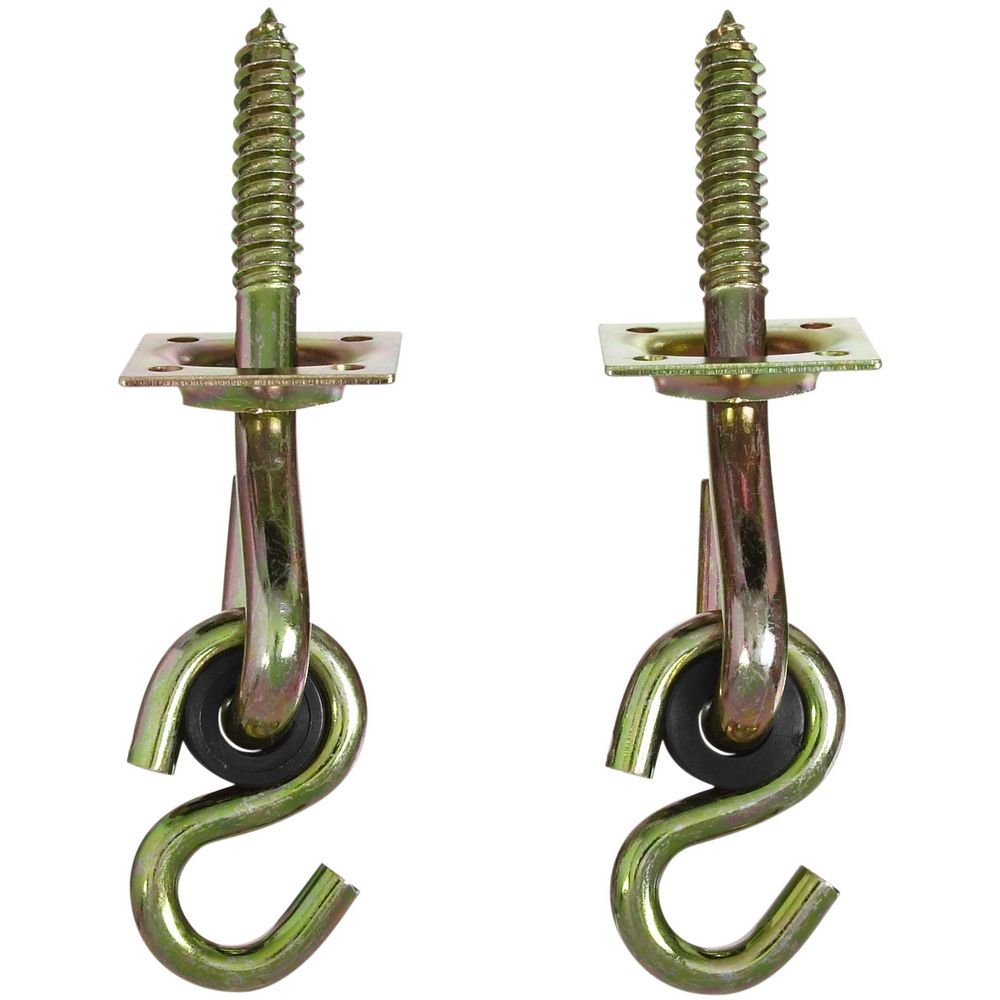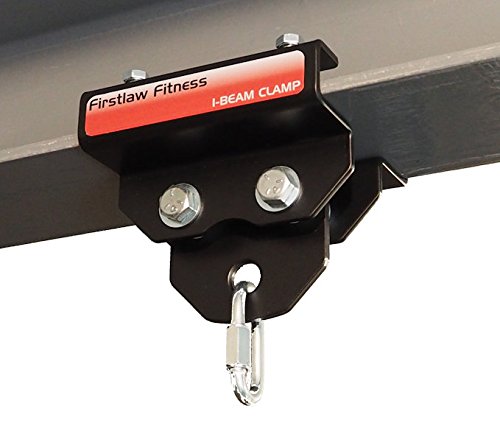
If you’ve ever visited an Occupational Therapy gym (like the ones pictured above), you would see lots of big, expensive, fun equipment. Equipment that you either can’t afford or just can’t fit into your house. Making a sensory room or rooms can be overwhelming, so I’m going to break down how to build an affordable, at home, sensory gym for your kiddos. Remember, sensory equipment does not have to be in just one room. I have different kinds of equipment all over my house, depending on what it’s used for. Calming swings in the kids bedrooms, play swings in the basement, slides and ball pit in the playroom, etc. Don’t think you have to set aside a room in your house just for the equipment. Try to integrate the equipment into your house.
Whether it be a sensory swing or a playground style swing, swinging is always a fan favorite for sensory kids. Sensory swings to help calm kids can be put in their bedrooms or quiet corner. These kinds of swings are generally for comfort, provide gentle rocking motions, and may be enclosed for darkness. Swings like the Nest Swing Chair Nook, the Rope Hammock Chair Swing, the SENSORY4U Indoor Therapy Sensory Swing, or the HugglePod Hanging Tree Tent all are affordable options that provide different comforting environments, depending on your child’s needs.
You can attach these to a ceiling beam, or what I like best is using a adjustable hammock chair stand or this C Hammock Frame Stand. I have both and can verify they are easy to assemble, heavy duty, and work with different types of swings.
Playground style swings offer a more stimulation for excitement and regulation. These can also calm kids, but for bedtime, I’ve noticed the hammock style works best. Different types of playground swings can be the High Back Full Bucket and Swing Seat, the Little Tikes baby swing, the trapeze swing bar with rings, or a saucer swing for kids who don’t want to spin.
We happen to have wooden beams in our basement, so drilling holes and putting swing hooks into the beams was easy. If you have steal, exposed beams, try this Firstlaw Fitness I-Beam Clamp.


A ball pit is a fairly simple piece of equipment that can serve multiple purposes. Kids can relax their bodies on top of the balls, dive down into the balls to feel compression and darkness, and use the balls to help desensitize their skin. They are also just plain fun! I first started with this 3 in 1 Jungle Gym PlaySet that I found used on Craigslist. The lady selling it also included 350 balls which filled it perfectly. But after using it as a slide for our stairs, it got completely destroyed … plus the kiddos were growing bigger and 3 kids just can’t fit into it.
I then moved onto an inflatable pool as the ball pit and this worked even better because the side are soft. This Intex Swim Center was a perfect size for the playroom, fit three kids, but did require A LOT of balls.
I think having a slide going into the balls provides even more stimulation, regulation, and desensitization. This Intex Rainbow Ring Inflatable Play Center has a slide attached to the pool. If you already have a small slide like this Little Tikes Junior Play Slide, use it to slide into a small kiddie pool.
Check out my article on ball pits to see how to fill out the pit and what kinds of balls to buy.
I wrote an article about different types of calming lighting to put in a sensory room, such as lava lamps, projecting lights, or bubble lights. But sensory rooms can also have lights that kids play with to either stimulate or calm them. This Fiber Optic Curtain Light Kit can be fun, calming, and stimulating depending on the setup and how kids use. This Fiber Optic Lamp is wonderful because kids can lay beside it and run their fingers through the lighting. Aquarium Mood Lamps are always calming and come in a variety of sizes. And this Sensory Acrylic LED Message Writing Board is incredibly interactive and fun, especially in a dark room.
Being able to control the lighting of the sensory room is very important. If it’s the middle of the day and your child needs to calm down, having bright sunlight shining is not going to help. Or if you are like my kiddos and in the summertime when it’s still light out and I say “it’s time for bed”….all chaos ensues because “mom, it’s still daytime”. So…. blackout curtains are a must-have in the sensory room, but also consider them in the kid’s bedroom as well. Look for heavy, usually insulated and heat blocking curtains. And make sure to buy ones that are much bigger than your windows so you can hang them higher, wider, and longer than the actual window or you’ll get this wonderful look.
Your child should have immediate access to music or a sound machine when they enter their sensory space. I’m a huge fan of the Amazon Echo Dot and actually have 6 of them in my house. I hang them on walls using large sized Command picture strips, but have also purchased a couple Echo Dot holders to keep cords out of reach. Ask Alexa to play ‘Spa Music’, or my favorite, ‘Zen Garden’, and I know your kids will immediately relax.
I’m also a huge fan of the Marpac Dohm white noise machine. You may see these around doctors offices and there is a reason. They completely block outside noise. Put one near the door of your sensory room or your child’s bedroom and they won’t hear anything going on around the house. They come in a variety of styles and colors, but even the most basic will make a difference.
Kids love climbing and can find the heavy lifting, pushing and pulling, and weight bearing very calming to them. You can always try to build a small climbing wall in your room, but there are also small climbers that can be easily moved around, broken apart and reused for different purposes, or just sold to buy a bigger item. We own the Little Tikes 8-in-1 Adjustable Playground and have moved it around over the years for different purposes. It now serves as a climber and slide into the ball pit. The other portion is used as a playhouse and the small slide I stuck outside on a hill that needed steps :).
Small climbers and slides such as this Simplay3 Young Explorers Adventure Climber, this Lil’ Monkey Everest Climb N Slide Playground, or Lil’ Monkey Dome Climber make a world of difference for kids. Also, check Craigslist or Facebook Marketplace for used (preferably indoor used) climbers.
Kids love to jump. And jumping can be very regulating/calming for kids. Jumping can also be stimulating, so depending which type your child is will depend on where your put your trampoline. There are safer, smaller, indoor trampolines for young children. This Little Tikes Trampoline has a handle for kiddos to hang onto. This works great for kids who may be a little timid or afraid of heights. Whereas this Skywalker Trampoline is great for the crazy, fearless jumper because it is enclosed. If you have more than one jumper, this Jump2It 2 Person Mini Trampoline is perfect for 2 kiddos and has an adjustable handle they can both hang onto.
Depending on what room you are using and for what purpose, you may or may not need to adjust the type of flooring. If the room is used for calming, you should have soft carpet, soft rugs, or just soft areas they can lay down on. If the room is being used for play, rubber mats work great because they are non-skid, cushioned for falling, and noise reducing (plus if you have a tiled basement like I do, they help keep the floor warmer). I love these 5/8″ Soft Wood Interlocking Foam Tiles in our basement. As you can see in the picture, I started off with the dark gray tiles (seen in the back), but they aren’t very thick or durable. Overtime, I have replaced them with the wood grain tiles as they are thicker and much more durable…plus they look nice.
Kids love to hide, crawl, be confined, or just lay in small spaces. Tunnels are an easy accessory to any sensory room. It may be a part of the climbing structure or be a material tunnel. This Hide N Side Kids Play Tunnel is great for multiple kids, or just fun on their own. My kids have this single tunnel and use it for a variety of activities around the house. They also just like to be inside it and rest. This 8pc Children Play Tent and Tunnel offers lots of options for configuring into different shapes and play areas. The best part about all these tunnels is they collapse flat for easy storage.
Make sure your sensory room has places to cuddle and rest. Kids may use their sensory room to relax and read, to squish themselves for comfort, or just to sit and watch TV, so make sure they have comfy spots that fit their body and needs. We love these Faux Fur Saucer Chairs, but they do tip easily so it’s not for younger kiddos. This Inflatable Peapod Chair is perfect for the kiddos who likes to feel compressed and squished. This Scoop Rocker isn’t soft, but it does provide a stable, rocking chair for kids who like to rock themselves. Of course the old tried and true Bean Bag Chair is great for the kids who like to flop down on anything soft.
Comments are closed.
I’m so proud of you for providing such educational information. Not only are you using this for my grandchildren but you are so happy to help others thru your experiences and education.
Thank you! And thank you for visiting!